Finally it came to America. We will build icebreakers!
The US Coast Guard icebreaker Polar Star uses all its 13800 tons and 75000 HP. for laying a route to the Makmordo station in Antarctica in January 2017
After a long period of lull in purchases, Canada and the United States finally began programs to increase the icebreaking capabilities of their coast guard by upgrading outdated fleets.
While Russia is in full swing implementing its programs for building conventional and atomic icebreakers, the governments of Canada and the United States have for many years demonstrated a lack of any interest in projecting a sovereign presence onto the icy expanses of the Arctic.
Moscow, fueled by increased mining activity in Siberia and its territorial claims in the polar region, invests heavily in the icebreaking fleet to support commercial shipping, scientific research and military activity not only along the Northern Sea Route, but also far beyond .
Despite the melting of the ice cover, the increase in maritime shipping in the Arctic, and ominous signs that Russia is preparing to pump weapons this region, Canada and the USA for many years expressed their unwillingness to replace old icebreakers currently operated by their coast guard, much less spend money on additional ships. However, after many years of frozen budget budgets, politicians from Washington and Ottawa appear to have somewhat warmed to this idea.
Frozen thaw
In accordance with presidential directives, having the status of an arctic country and “diverse and obvious interests” in this region, the United States has been projecting its naval forces here in the Antarctic for decades. A small icebreaking fleet allows the US Coast Guard (US USB) to maintain military readiness, ensure the implementation of agreements aimed at protecting industrial activity and the environment, ensure the safety of coastal infrastructure and sea routes, and conduct scientific research.
However, years of chronic underfunding had a negative impact on the condition of fixed assets of the coast guard. The estimated service life of its two heavy icebreakers 70-s built a long time ago, and one of them from the 2011 year, moored at all to the pier and does not go to sea due to faulty engines.
The coast guard command is clearly aware of the insufficiency of the resources at its disposal, especially compared to the large number of Arctic icebreakers deployed by Russia, whose government has recently become increasingly assertive in proclaiming territorial rights at high latitudes.
In 2012, the Coast Guard published a comprehensive analytical report “High Latitude Mission Analysis Report”, which identified the need for six new icebreakers capable of operating in difficult ice conditions, three heavy and three middle classes.
“We considered all the tasks that our icebreakers performed historically, and the tasks that we need to perform from the point of view of the law. We determined the amount of presence that is required to perform these tasks in certain areas and took into account such factors as, for example, alternating vessels with the purpose of their periodic maintenance, ”says Ahmed Majumder, deputy director of the program for the Polar Icebreaker Heavy Polar Icebreaker (HPIB) . “Thus, at the moment we want to have three medium and three heavy icebreakers.”
However, to date, complete clarity exists with only one icebreaker HPIB; quite possibly this is due to persistent problems with the allocation of funds for the maintenance of the coast guard, which is often financed by a residual principle.
It is expected that three heavy ships designed to replace the venerable Polar class icebreakers and restore the strong Arctic and Antarctic surface capabilities as quickly as possible fleetwill perform nine of the 11 mandatory tasks of the US Coast Guard: ice operations; combat readiness; help in navigation; study of marine biological resources; maritime safety; law enforcement; environmental protection; security of ports, sea lanes and coastal strip; and search and rescue operations. (Two tasks did not fall into this list - the fight against migrants and drug trafficking; this, for example, is actively pursued by the coast guard in the Caribbean).
The Louis S St-Laurent 60 icebreaker has been overhauled at the cost of 14 million Canadian dollars at the Chantier Davie shipyard, after which it will remain in operation until the middle of the 20 when it is almost 60 years old.
Project Solutions
In February, 2017 of the United HPIB Program Implementation Unit, staffed with US Navy and Coast Guard officers, awarded a contract for research and analysis on the HPIB project to Bollinger Shipyards, Fincantieri Marine Group, General Dynamics / National Steel and Shipbuilding Company, Huntington Ingalls Industries and VT Halter Marine. Five agreements totaling 20 million dollars helped the Office staff to clarify and verify the preliminary specifications of the ship and at the same time identify ways to reduce the cost and speed up the construction schedule.
A preliminary request for proposals for project detailing and the construction of one heavy vessel with an option for the next two was issued in October 2017 by the command of naval naval systems for the benefit of the Directorate. The industry was given time to respond until December, but then the deadline was postponed to mid-January 2018. In March, the final request for proposals was released.
Although commercial and ethical principles do not allow officials to publicly disclose an estimated cost, Majumder said that the "approximate cost" of the lead ship of the series will amount to "up to one billion dollars." However, this amount includes one-time design and development costs, which will be distributed to any subsequent ships.
“We have done a thorough job and are striving to save at the expense of our research contracts, and our design team is looking for opportunities to save in a preliminary project,” he added.
While many overseas shipyards could definitely build icebreakers for less money, US BOs are legally obliged to procure mainly military vessels from American enterprises (US federal laws 14, section 665).
When asked whether local companies have sufficient experience in designing and building icebreakers, Majumder replied: “We have a rather accelerated schedule for the development and construction of these ships and their deployment, and therefore there are great risks. But we have studied the best practices in the entire shipbuilding community, in the coast guard and in other communities. One of the most significant risk reduction factors is the formation of the five previously mentioned research teams to evaluate the project, its cost and construction schedule. ”
He further said that from the very beginning, five shipbuilding companies were set up to combine efforts with the designers at the earliest stages in order to build a vessel on time and with high quality using the most modern technologies. “Due to preliminary studies, we were able to give shipyards the opportunity to identify areas of risk regarding production capabilities, and, based on the capabilities of their production, many shipyards have already made changes to their projects. As a result, we have complete information and it is safe to say that shipyards in the United States are capable of building a heavy Arctic icebreaker. ”
According to the representative of the company Fincantieri, which offers the project of its Vard Marine division with construction at the Philly Shipyard in Pennsylvania, the unique commercial advantages offered by competing teams are "less connected with the project of the parent organization and more with the overall projects of the teams themselves."
“We are pleased to have the same technical team that created the lead project, and is currently developing a basic HPIB project,” says a company representative. “The most important technical experience gained in the process of creating the lead project allowed us to accelerate during the design stages, it is vital when developing a new vessel optimized for the special requirements and tasks of the US BO.”
Fincantieri's “team of experienced designers” chose project components (for example, hull lines, propulsion schemes and general layout) using “experience of designing icebreakers in the US and abroad, shipyard production capabilities and information on the operation of icebreakers and icebreakers of US BO class” .
In 2017, a heavy icebreaker program was tested at the National Research Council of Canada in St. John’s on a heavy icebreaker program.
Through thin and thick ice
Although in recent decades the global temperature increase has contributed to the reduction of ice cover in the Arctic, the area of ice in the Antarctic has actually increased. According to US BO, the ice of the first year, as a rule, in both regions is about 2 meters, whereas the thickness of multi-year ice in the Arctic is on average 6 meters and in the Antarctic 9 meters.
The US Polar Star and Polar Sea heavy icebreakers (the latter is laid up) on the US BO balance sheet are designed to break the ice with a thickness of 2 meter at an average speed of a 3 node or 6,4 meter due to a reception known as “return and ram” (for comparison, the average icebreaker Healy class (WAGB-20) these numbers are 1,4 and 2,4 meters).
According to the Polar Icebreaker ORD (Operational Requirements Document) document - operational requirements for icebreakers) published by the US BO in 2015, new ships will operate in "extremely difficult conditions with aggressive weather conditions, including hurricanes and tropical cyclones capable of creating waves up to 14 meters. "
Further in the same document: “The greatest sea excitement ... happens during the transitions to the Arctic and Antarctic and back. Low-pressure areas moving clockwise around Antarctica generate strong winds and, accordingly, sea excitement, which leads to chaotic movement of the ship in space, limiting the service life of the equipment and people's working capacity during the transitions through the Southern Ocean (southern Atlantic, Indian and Pacific). oceans adjacent to Antarctica) ".
This means that the icebreaker HPIB will actually have to work in the temperature range from -40 ° С to + 46 ° С, water temperature from -1,8 ° С to 31 ° С and wind speeds exceeding 161 km / h. The ship is designed to withstand temperatures up to -58 ° C.
“Reliability, maintainability and availability of systems are very important for this program and for ships, since they will operate far from the infrastructure under difficult conditions and must rely only on themselves,” said Madzhumder. “If something goes wrong, they should be ready to save themselves.”
The ORD document lists dozens of “performance requirements,” defining the many different tasks that HPIB must perform during an operational deployment.
This list is headed by icebreaking capabilities - the new platform should be able to make its way through ice with a thickness of at least 1,8 meters (ideally 2,4 meters) at a constant speed of the 3 node or through torustoy ice with a thickness of 6,4 meters and create a navigation channel at least 25,3 meters wide.
The steady speed should be 15 knots, the duration of sailing for at least 80 days, the minimum cruising range of 2778 km at a speed of 12 knots in ice-free waters. It is expected that the icebreaker will operate at least 3300 hours per year - partially at wave heights up to 9 meters - and survive at wave heights up to 14 meters.
Form matters
According to the ORD document, the project will have different power plants, propulsion and steering systems. At the same time, nuclear power plants with which Russian heavy nuclear icebreakers are equipped, including ships of the 22220 project and its lead ship, the Arktika icebreaker with a displacement of 33540 tons and power on the 60 MW shafts, as well as promising giants of the 10510 “Leader” project with 120 MW are excluded , but US BO does not want to limit the imagination of designers in other types of power plants and propulsion.
“We want to give shipyards some flexibility in finding various innovative ways to meet our needs,” said Majumder. - We do not want to clamp anyone in the frame. Each of our industrial teams considered propellers and traditional diesel engines in various configurations. A large amount of research was conducted in the field of power plants. "
Unique asymmetrical rescue vessel of the icebreaking class "Baltika"
Can the ship also have an innovative hull shape, such as, for example, the 74-meter Russian icebreaker Baltika? Emergency and Rescue Ship Project P-70202. developed by the Finnish company Aker Arctic Technology and supplied to Rosmorrechflot in 2014, it features a patented asymmetric hull and three azimuth propellers, one located in the bow, the second in the stern, and the third in the side in the stern of the hull. This solution ensures the efficient operation of the vessel when moving, bow, stern and lag. In the “sideways” mode, the ship can lay a channel 50 wide in meters in ice 60 thick, see
Madjumder does not exclude this. “Polar Star was built in 70-ies and since then progress has gone far ahead in ice modeling, ice testing, and hull design, so we are looking at market offers, modern icebreaker hull designs that use their own weight to break the ice ".
The helipad will allow for operations involving the MH-65 Dolphin helicopters and the newly upgraded MH-60T Jayhawk and drones (with automatic takeoff and landing system); the hangar on the ship accommodates two aircraft.
Two boats with the possibility of over-the-horizon delivery of the operational team will be stored in closed modules; In each of the boats will be able to accommodate a group of eight employees of the Coast Guard. The ship will also be placed detachment of seven divers with a portable pressure chamber, which will be engaged in the protection of the vessel, as well as maintenance and repair.
The vessel will have equipment for conducting limited “scientific activities”: oceanographic research, underwater mapping, collection of biological materials, acoustic acoustic profiling, and similar works; for these purposes, a volume equal to the volume of six 20-foot containers has been allocated.
Other ORD requirements include an 20-ton crane, loading equipment for three or more 9x35 ft navigation buoys, oil spill removal equipment and a sensor kit with two search radars (for navigation and ice detection) and airborne radar.
As for sensors and information systems, the new ship will have the same capabilities as the Legend and Sentinel class coast guard boats and the Heritage perspective boat. “It is very important for the coast guard to have a high level of system unification, therefore we will upgrade any system at once in the entire fleet of US BO,” said Madjumder.
Future transformability
The vessel will be manned with an unnamed crew, and it will also accommodate another 50 people: divers, BO staff, scientific staff and aviation specialists.
“We have provided multifunctional rooms and spaces on the decks for future expansion, that is, we will be able to integrate new technologies over time,” Majumder said. “We expect to deliver the first ship in 2023, and in five years, much can change, so we need a flexible project with an eye to the future.”
Like the current US BO ships, the new ships will have 12,7-mm machine guns on board for warning and self-defense. When asked whether more powerful weapons could be installed, perhaps to counter the threat posed by Russian icebreakers or other potential adversaries in the Arctic, Madzhumder replied: “We don’t know what the future holds for us, and therefore we have provided for this project please. "
An HPIB vessel will have a life span of 30 years, although it may be extended to 40 or more years. “There is a need for promising systems, future improvements, future opportunities in order to meet our national security and national defense objectives. Therefore, we have a reserve in terms of volume and mass, so that in the future without any problems we can take on board any systems. ”
According to the HPIB schedule, the contract for the construction of the lead ship of the series will be issued in the summer of 2019, and then in 2021 and 2022, optional contracts (in the case of financing) for the second and third ships.
Deliveries are scheduled for the middle of 2023, 2025 and 2026, “but we are trying our best to find new and innovative ways to build them as quickly as possible,” said Madzhumder.
However, if the current limited budget will remain, then the US BO may possibly correct its purchasing strategy by ordering the fourth heavy icebreaker to replace the new medium ship. According to the report presented at the Arctic Day conference last November, this step will save almost 100 millions of dollars, although critics say that these conclusions ignore the savings in the entire life cycle that will accrue from operating small icebreakers.
Polaris vessel is equipped with Azipod wind-steering complexes
Northern Fleet
With a large number of Arctic icebreakers at its disposal, the Canadian Coast Guard (CCD) is not in a hurry to commission new ships. In 2013, plans to replace the nearly fifty-year-old heavy icebreaker Louis S St-Laurent were postponed in order to make room for the construction of ships for the Canadian Navy, which the cabinet of ministers considered a more urgent need.
Unlike the US BO, which is an armed organization under the Ministry of Homeland Security with clear responsibilities for defense and security, the BWC is a civilian organization within the Canadian Ministry of Fisheries and Ocean Research and is mainly involved in maritime security, environmental protection and economic objectives.
Along with clearing icebound routes, the main objectives of the BWC are to provide research, supply materials to remote settlements, maintain navigation facilities, combat pollution, search and rescue, and collect information on coastal and marine areas.
Most large coast guard ships are ice-class ships: 17 of them are used for icebreaking purposes and at least six are deployed above 60 degrees north latitude. The Arctic fleet currently consists of the St-Laurent heavy icebreaker (part of the BWC in 1969) and Terry Fox (1983), four medium-sized icebreakers (built in 70) and a multitasking vessel with high autonomy of navigation.
The Canadian government has allocated 1,2 a billion dollars to increase the intensity and safety of supplies in the Arctic zone, as well as search and rescue operations. As part of this project, the auxiliary coast guard service will receive up to eight new speedboats.
The planned to build the icebreaker John G Diefenbaker will be the largest and most powerful ship in the Canadian service and will significantly increase the country's presence in the Arctic, because it will be able to work longer periods of time in difficult ice conditions at higher latitudes compared to any other ship of the CCD fleet.
A new KBO flagship will be built at the Vancouver Shipyards shipyard (part of the Seaspan group) after the fleet program completes the construction of two supply vessels of the Protecteur class. The construction of these two tankers is scheduled to begin in 2018, and put in 2021 and 2022, but the media report that the middle of 2020-s will be a more realistic period. The construction of the icebreaker Diefenbaker was allocated 1,3 billion Canadian dollars, but officially the schedule has not yet been reported. The old icebreaker St-Laurent is scheduled to be repaired in 2025-2026, which is several years later than originally planned.
The future icebreaker will have a length of more than 150 meters, a width of 28 meters, a draft of 10,5 meters and a displacement of 23700 tons, that is, it will be significantly larger and more powerful than its 120-meter predecessor. He can get the highest ice class - Polar Class 2 Icebreaker (+), which speaks of the additional capabilities of this vessel due to the reinforced hull and the ability to high ice loads.
The project concept was developed by Vard Marine in collaboration with Aker Arctic Technology and Imtech Marine Canada and with the participation of Curtiss-Wright / INDAL Technologies, Noise Control Engineering and SNC-Lavalin.
The Canadian National Research Council provided environmental data and relevant analysis to help determine the conditions under which the vessel will operate, as well as provided a platform for testing a scale model.
These tests demonstrated the main advantages in maneuvering and ice resistance for the selected hull shape, as well as the significant advantages of the scheme for locating the power plant with two outer shafts and an azimuth steering wheel complex along the axial line.
Diefenbaker will be equipped with a combined power plant consisting of six diesel generator sets with an installed capacity of 39,6 MW. The vessel will be driven by a two-shaft DGU (power 11 MW) and a single steering column (Azipod, 12 MW). A dynamic positioning system coupled with two 1,9-MW fore bow thrusters will allow the ship to maintain its position at wave heights up to 4 meters and surface currents to 3 nodes.
Other features of the vessel include the combined system of stabilization of heel and active rocking of the vessel, as well as the airflow system in the fore and middle of the vessel to reduce the ice resistance of the vessel.
The concept of a modular ship superstructure, built around standard 20- and 40-foot containers, will create a multitude of multi-tasking volumes, including more 40 laboratories and other workrooms.
Polaris icebreaker can make passages in ice up to 1,8 meters thick
Patching holes
However, considering that the construction and commissioning of icebreaking vessels into the fleet happened many years ago, and the middle class icebreakers are also not much younger, the question arises: what, for example, is the Canadian government going to do to eliminate the threatening inequality of opportunities?
The announcement of the competition, published by the Ministry of Public Works and Public Services in November 2016, states: “Due to the aging and limited readiness of the icebreaker fleet, the CCD predicts that in the next decades, additional icebreaking capabilities may be required at different times, up to five icebreakers (heavy, medium or light). In this regard, the BWC should explore possible strategies to eliminate potential lag in capabilities. ”
Companies interested in offering intermediate ice-breaking capabilities include the Finnish shipowning company Arctia, which can deliver heavy and medium-sized icebreakers as soon as possible. The company's fleet consists of eight vessels, including the IB Polaris icebreaker with a displacement of 10960 tons - the world's first vessel in its class operating on liquefied natural gas.
Delivered in 2016 by the Arctech Helsinki Shipyard shipyard, this environmentally friendly vessel is equipped with two Wartsila dual-fuel engines (which can also operate on low-sulfur diesel fuel), three Azipod ABB-type steering wheel complexes and an 1015 m3 spin-oil collection system.
The icebreaker Polaris can pierce ice with a thickness of 1,2 meter at a speed of 6 nodes and a thickness of 1,8 meter at a speed of 3,5 node. Currently involved in the winter piloting of ships in the Baltic Sea, the ship in the summer could perform similar tasks in the Canadian Arctic.
Canadian companies Federal Fleet Services and Davie Shipbuilding have acquired the rights to purchase and redesign the MV Aiviq vessel for Arctic oil and gas exploration, which, in their opinion, will exceed the capabilities of the outdated St-Laurent vessel in research and rescue activities. This ice-class vessel with a length of 110 meters turned out to be unclaimed after the closure of American projects for the extraction of hydrocarbons above 60 degrees north latitude.
In this regard, the representative of the BWC said: “We understand that additional icebreaking capabilities may be needed in the next few years, as we decommission vessels for maintenance and repair. Therefore, we are consulting with the industry on the supply of intermediate ice-breaking services. ”
Some countries' fleets and coast guards may have other priorities, allowing their icebreaking capabilities to decline, but the economic and strategic importance of the polar regions is so great that, undoubtedly, they should come to grips with maintaining sovereign rights, primarily in the Arctic. Due to the fact that some powers are louder and louder claiming their rights to the Arctic regions (for example, China and Russia), such state structures as the US Coast Guard and Canada, for example, must oppose this, and this will be one of the toughest confrontations which will be witnessed by the next generation.
Materials used:
www.shephardmedia.com
www.ccg-gcc.gc.ca
www.marinelog.com
www.fincantieri.com
www.korabel.ru
bmpd.livejournal.com
www.wikipedia.org
en.wikipedia.org
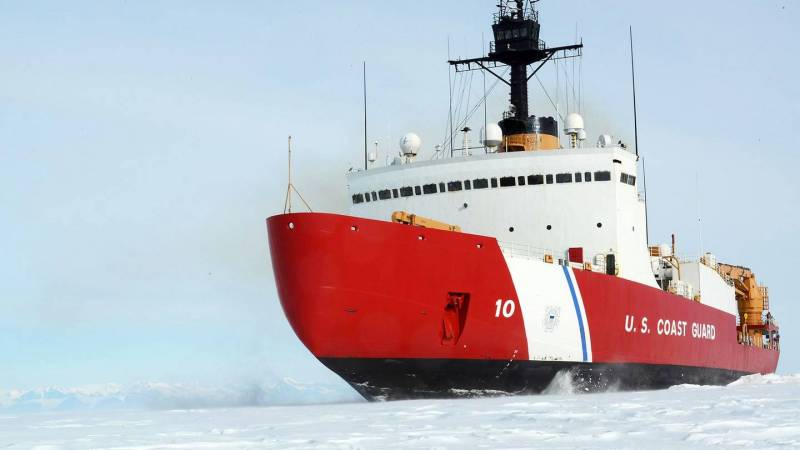
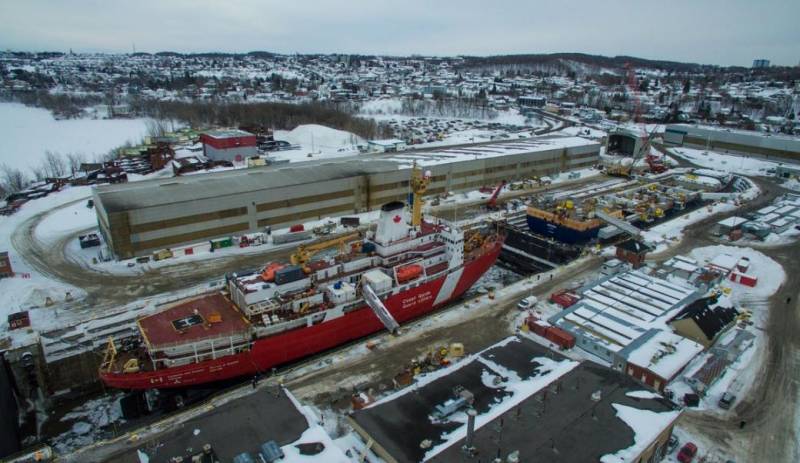
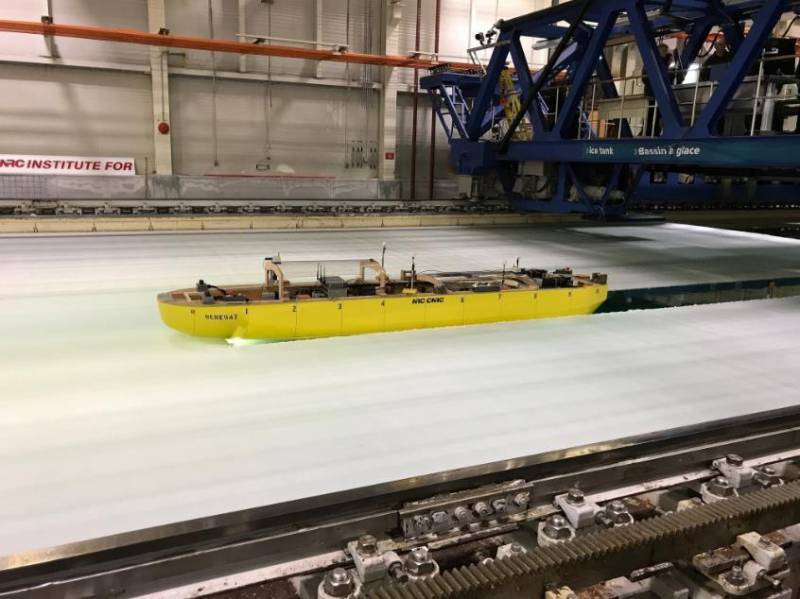
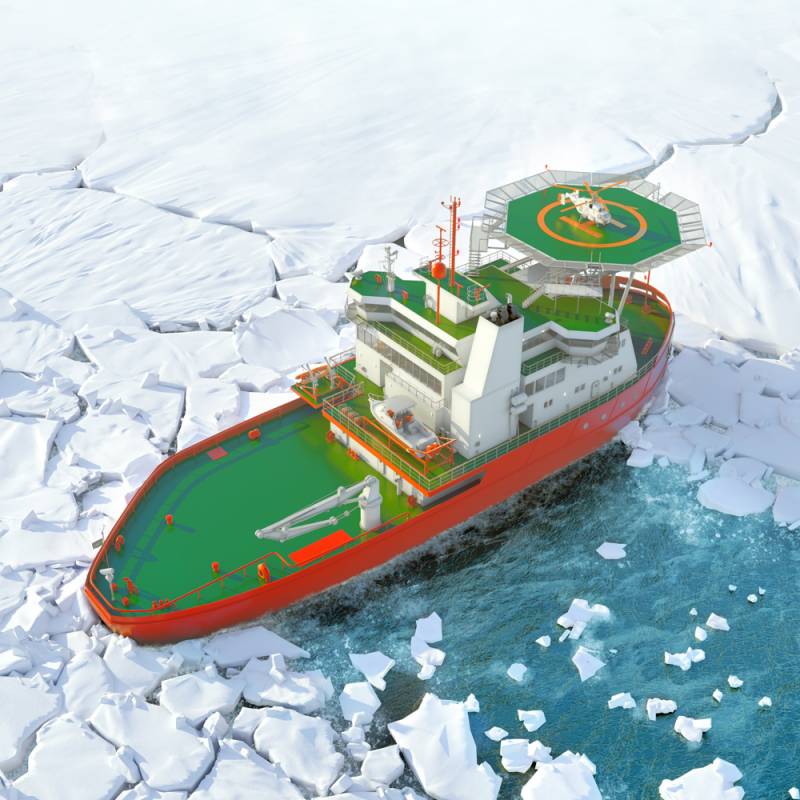
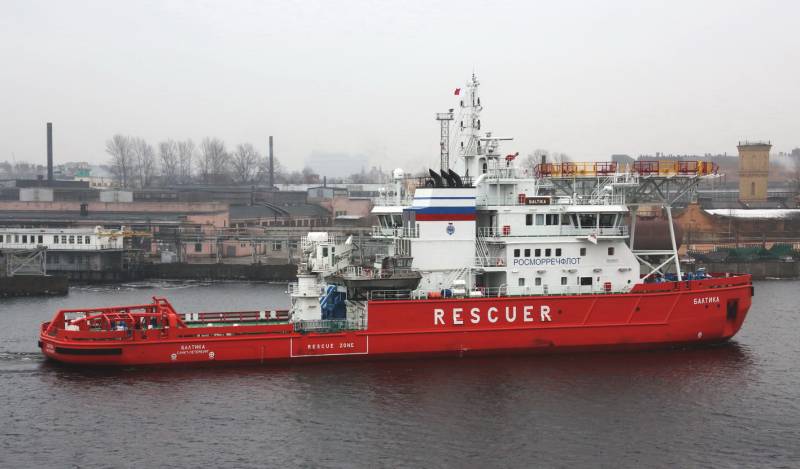
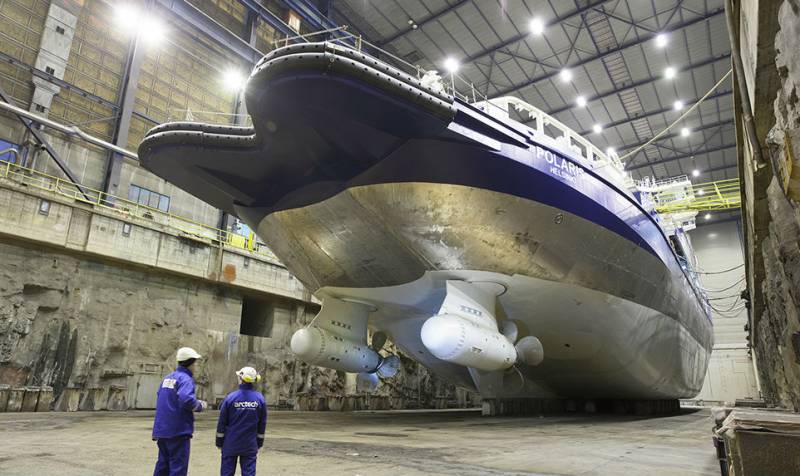
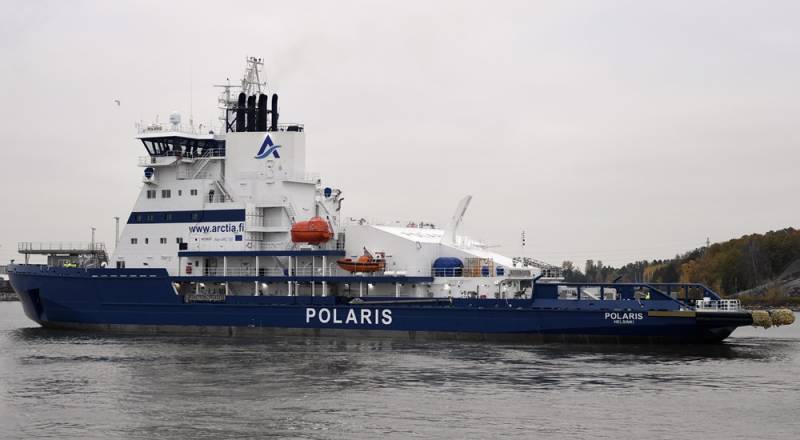
Information